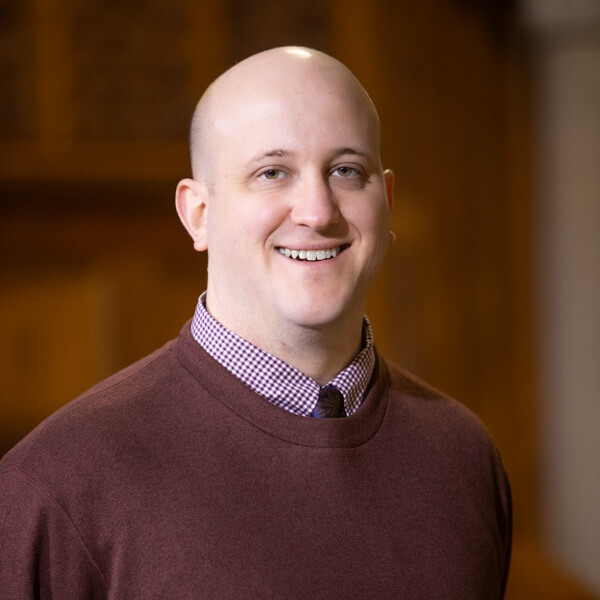Your gift to sacred music brings us together and inspires us. Click here to make your gift online.
Early Years
Founded in lower New York in 1835, St. Bartholomew’s moved to midtown Manhattan in 1872 where its substantial new structure attracted great preachers and a large and influential congregation. From a parish house on 42nd Street, waves of immigrant poor were provided human services and spiritual nurture. The parish itself began to assume a leading musical presence in the growing city, capped by the bringing of Leopold Stokowski from Europe for his first American musical post. In addition to leading the choir, he played the Hutchings organ of 100 ranks in services and recitals. It was on this important instrument that one of the world’s most highly-regarded concert organists, Edwin H. Lemare, made his American debut in 1901.
Park Avenue
Structural problems in the building led to a search for a nearby site for a new and larger church, and the present Romanesque structure designed by Bertram Grosvenor Goodhue was opened at Park Avenue and 51st Street in 1918. Organist and Choirmaster Arthur Hyde presided over a new pipe organ of 122 ranks, commissioned from the Ernest M. Skinner Organ Company. It was in this period that composer Amy Beach first came to the parish, where she would become de facto composer in residence for many years, writing most of her sacred choral music for St. Bartholomew’s Choir.
Spheres of Influence
St. Bartholomew’s Church has a long tradition of musical excellence and an uncommon influence on the musical life of America. Its history has included some of the most distinguished leaders in church music in the U.S. including Leopold Stokowski, David McK. Williams, Harold Friedell, Jack Ossewaarde, James Litton, and William K. Trafka.
Stokowski went on to be one of the most influential orchestral conductors of the twentieth century. McK. Williams was one of the leading organists and composers of his generation and a guiding force in the creation of The Hymnal 1940. Friedell is best known for “Draw us in the Spirit’s tether,” possibly the most popular church anthem written by an American composer. Ossewaarde continued the famed weekly Sunday afternoon oratorio performances, drawing large crowds to hear a choir with as many as 75 professional members. Litton was longtime director of the American Boychoir and, in his role on the editorial committee for The Hymnal 1982, hosted the final year of that committee’s work in the Choir Room at St. Bartholomew’s. Under Trafka’s directorship, St. Bart’s became the place where one could hear major sacred choral works with orchestra presented within the context of a liturgy.
The Organ Historical Society began in 1956 with a meeting in the Choir Room at St. Bartholomew’s. The St. Wilfrid Club, a social club to promote and further the interests of organists, began with a 1908 dinner hosted by Rector Leighton Parks. Parks invited a number of prominent New York City organists to meet Arthur Hyde, St. Bartholomew’s new Organist and Choirmaster recently come from Boston.
The church’s two Æolian-Skinner pipe organs are central to the liturgical and concert life of the church. The Chapel organ is an instrument of two manuals and 18 ranks; it is a remarkably versatile instrument that includes two enclosed Swell divisions. The organ in the Church is the largest in New York City and one of the quintessential examples of the American Classic organ.
A Flourishing Community
As Park Avenue changed from a residential neighborhood to one of the world’s most crowded corporate canyons, “St. Bart’s” as New Yorkers affectionately call it, has stood as an oasis of light and spiritual refreshment. Today it is home to a range of offerings for members, seekers, and visitors. Open for worship and pilgrimage, the building and its congregation stand for a radical welcome, a Christian expression in the evolving Anglican tradition to a world where people of many faiths work and worship together as never before.
St. Bartholomew’s Community House (1925), adjacent to the church, is home to the preschool and houses religious education classes, recovery meetings, and weekly meditation among many other offerings. St. Bart’s community ministry feet thousands of the city’s hungry and offers shelter to the homeless. Inside Park offers food and hospitality year-round, including out on the Great Terrace in the warmer months. The auditorium once served not only as the primary stage for St. Bart’s Players, but even housed a pipe organ in addition to those in the Church and Chapel.
Worship
At the heart of it all is worship, keyed to the rhythm of the morning and evening prayer of the church and the daily Eucharist. Every Sunday includes liturgies in a range of styles: a quiet, traditional celebration at eight; at nine, a Eucharist in the round with St. Bart’s Singers in an eclectic blend of contemporary and traditional prayer and music; and the great classical repertoire with St. Bartholomew’s Choir at the 11 o’clock Choral Eucharist. St. Bartholomew’s Choir, an 18-voice professional ensemble also sings major works in concert in the Great Music series, including the annual Joyous Christmas Concert. Children and youth from the boroughs of New York City and beyond to sing with St. Bartholomew’s Choristers.
Concerts
St. Bart’s is also a center of music outside the liturgical realm. The Great Music concert series, produced by the Mid-Manhattan Performing Arts Foundation, offers outstanding concerts of choral and organ works in the Church, and chamber music in the Chapel. In addition to performances by St. Bartholomew's Choir and resident organists, past concerts have included performances by the Tallis Scholars, the choirs of Canterbury Cathedral, St. John's College in Cambridge, Christ Church Cathedral, Oxford, and St. Paul's Cathedral, London. The church recently served as the venue for several concerts video recorded by the New York Philharmonic.



